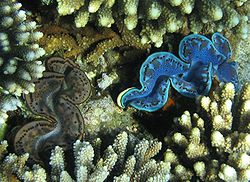Sessile
The term sessile (from the Latin sessĭlis, apt to sit) or sitting is often used in botany > to express the lack of an organ that serves as a foot or support. A leaf is sessile if it lacks its union with the stem or petiole, in the case of the flower, if it lacks a peduncle, and the anther is called sessile if it does not have a filament or is very short.
The term sessile is also used in zoology to refer to an aquatic organism that grows attached to or attached to the substratum, from which it does not separate or move. Many benthos organisms are. Examples include sponges, corals, some bivalve molluscs, such as oysters or mussels (but not clams), bryozoans or brachiopods. Among crustaceans, those of the order cirripedes, such as barnacles and barnacles, are also crustaceans.
Contenido relacionado
Anadelphia
Mammalia
Shibataea

